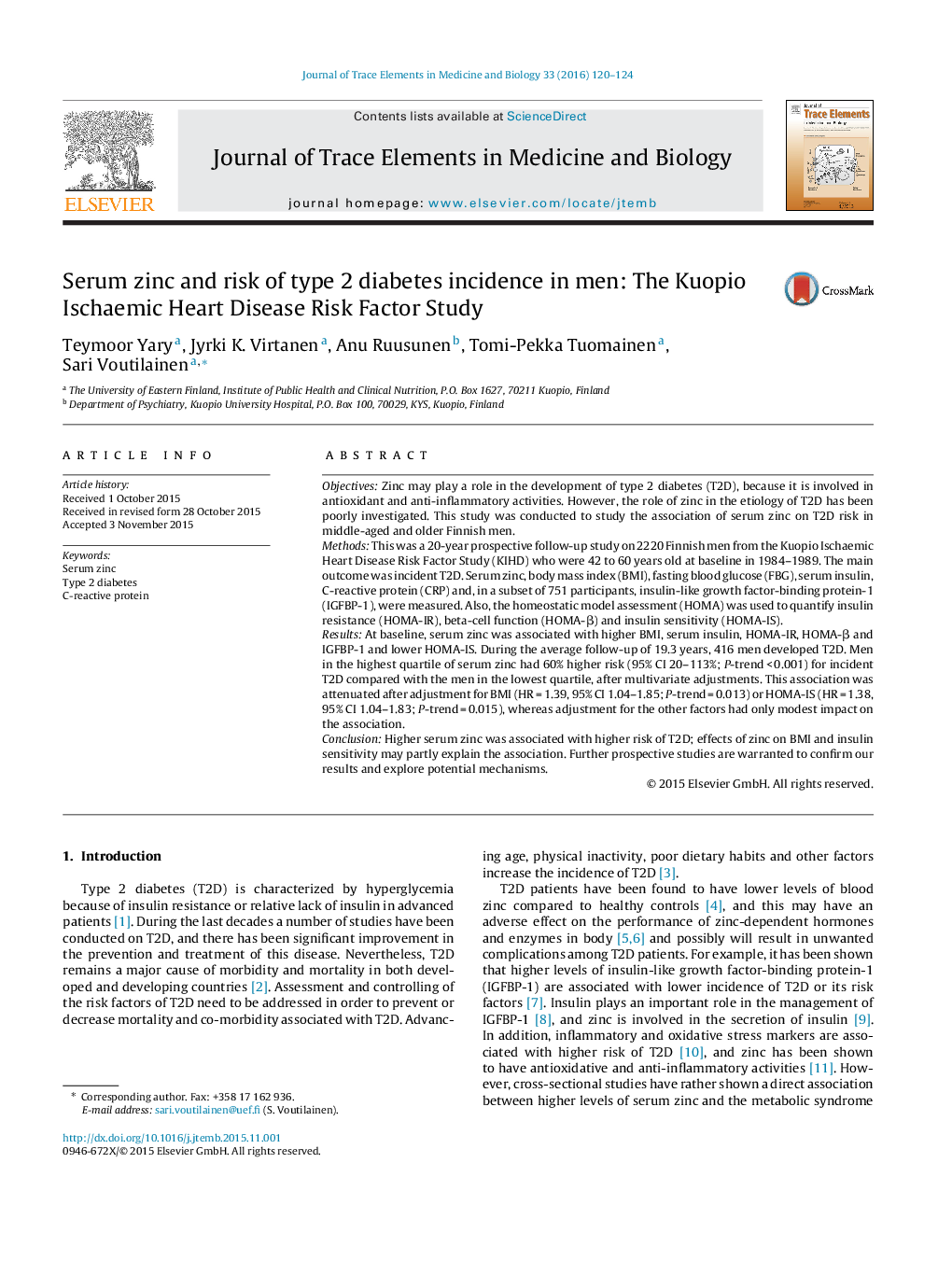| کد مقاله | کد نشریه | سال انتشار | مقاله انگلیسی | نسخه تمام متن |
|---|---|---|---|---|
| 1226431 | 1494823 | 2016 | 5 صفحه PDF | دانلود رایگان |
ObjectivesZinc may play a role in the development of type 2 diabetes (T2D), because it is involved in antioxidant and anti-inflammatory activities. However, the role of zinc in the etiology of T2D has been poorly investigated. This study was conducted to study the association of serum zinc on T2D risk in middle-aged and older Finnish men.MethodsThis was a 20-year prospective follow-up study on 2220 Finnish men from the Kuopio Ischaemic Heart Disease Risk Factor Study (KIHD) who were 42 to 60 years old at baseline in 1984–1989. The main outcome was incident T2D. Serum zinc, body mass index (BMI), fasting blood glucose (FBG), serum insulin, C-reactive protein (CRP) and, in a subset of 751 participants, insulin-like growth factor-binding protein-1 (IGFBP-1), were measured. Also, the homeostatic model assessment (HOMA) was used to quantify insulin resistance (HOMA-IR), beta-cell function (HOMA-β) and insulin sensitivity (HOMA-IS).ResultsAt baseline, serum zinc was associated with higher BMI, serum insulin, HOMA-IR, HOMA-β and IGFBP-1 and lower HOMA-IS. During the average follow-up of 19.3 years, 416 men developed T2D. Men in the highest quartile of serum zinc had 60% higher risk (95% CI 20–113%; P-trend < 0.001) for incident T2D compared with the men in the lowest quartile, after multivariate adjustments. This association was attenuated after adjustment for BMI (HR = 1.39, 95% CI 1.04–1.85; P-trend = 0.013) or HOMA-IS (HR = 1.38, 95% CI 1.04–1.83; P-trend = 0.015), whereas adjustment for the other factors had only modest impact on the association.ConclusionHigher serum zinc was associated with higher risk of T2D; effects of zinc on BMI and insulin sensitivity may partly explain the association. Further prospective studies are warranted to confirm our results and explore potential mechanisms.
Journal: Journal of Trace Elements in Medicine and Biology - Volume 33, January 2016, Pages 120–124
